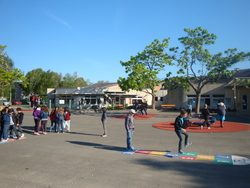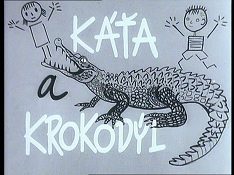29/03/18
Today is Thursday but I was only in my school until 11:30am as Beth, Briony, Lauren and I had a meeting with our host, Nina, at 1:30pm.
First thing today I was told I would teach three lessons in the morning. Firstly in Agnés Courgeon’s class with CM1/CM2, then in Christine Aué’s class with CM2 and finally after break I would do a lesson in Laura Bellout’s class with CE2/CM1. I taught my Scottish lesson, as these classes hadn’t had this particular lesson from me yet,
 My presentation was the same as last time and included; where I live in Scotland, our flag, the Loch Ness monster, castles, traditional food, animals, tartan, traditional sports and Scottish rhymes/poems. I again spoke the lesson in English, as this is how they learn a language in France. The lesson must be taught preferably only in that new language. Now and again for explanation reasons I translated part into French from the children and the teacher was also there to help translate.
My presentation was the same as last time and included; where I live in Scotland, our flag, the Loch Ness monster, castles, traditional food, animals, tartan, traditional sports and Scottish rhymes/poems. I again spoke the lesson in English, as this is how they learn a language in France. The lesson must be taught preferably only in that new language. Now and again for explanation reasons I translated part into French from the children and the teacher was also there to help translate.
I learnt from the last time I taught this lesson that I didn’t know the word for sheep and stomach in French, so this time I taught the lesson I had looked up the translation of these word prior to teaching and this helped me describe haggis to the children. They gained a much better understanding this time.
I also learnt what the national animal of France was. This helped me when explaining that the national animal of Scotland is the Unicorn.
I added into my presentation more about tartan and what it is used for. I explained that tartan could be used as a pattern in all types of clothing. I used the French words for specific items of clothing and them told them what these items of clothing were in English. This added a bit more learning into the lesson. I also said that it could be used for interior design in the home.
I got the children to stand up when I was speaking about highland dancing so that I could get the children engage and physically involved in the lesson. I showed them a couple of highland dancing positions and got them to copy them. They enjoyed this part of the lesson as it gave them a little break from sitting in their seats.
 Once again, when I had finished the lesson I asked the children if they had any questions. The questions were a good way of checking my understanding of French, as the children asked me questions in French. I was able to pick out key words and understand what they were asking, but other time I would have to look to the class teacher for help with translating. Although one girl is very good at trying to speak some English and she asked a lot of questions I was able to answer with no help from the teacher for translation. This is the same girl who was able to have a conversation with me on our way to see ‘My Fair Lady’ at the theatre,
Once again, when I had finished the lesson I asked the children if they had any questions. The questions were a good way of checking my understanding of French, as the children asked me questions in French. I was able to pick out key words and understand what they were asking, but other time I would have to look to the class teacher for help with translating. Although one girl is very good at trying to speak some English and she asked a lot of questions I was able to answer with no help from the teacher for translation. This is the same girl who was able to have a conversation with me on our way to see ‘My Fair Lady’ at the theatre,
A question that came up was about our traditional Scottish music, which I had not covered in my lesson. This gave me an action plan for the next time I teach this lesson. I needed to speak about the bagpipes and include a picture of them.
After my lessons had all finished I sat in Laura’s class until lunchtime. She did an interesting exercise with the children. She got them the fold their arms flat on the table and rest their head on them. This exercise help relax the children after a busy lesson. They did this in silence and the teacher whispered instructions. I liked this idea and thought I could use it in my future practice.
 Once it was lunchtime I headed back to the ESPE centre to have our meeting with Nina. The meeting was a half way catch up to see how we were getting on at our schools and if there were any problems that needed to be discussed. Beth, Briony, Lauren and I all spoke about our experiences so far and Nina looked pleased with our progress. She told us we would have a final meeting on the 18/04/18 to finish up our placement.
Once it was lunchtime I headed back to the ESPE centre to have our meeting with Nina. The meeting was a half way catch up to see how we were getting on at our schools and if there were any problems that needed to be discussed. Beth, Briony, Lauren and I all spoke about our experiences so far and Nina looked pleased with our progress. She told us we would have a final meeting on the 18/04/18 to finish up our placement.




 Our tour guide spoke to the children about what kind of things we were going to see in the museum. She asked the children to name kitchen objects that we might see. We were then taken on our tour round the museum. We first came across an old dinning room and she spoke about its features. Throughout the tour we saw a lot of vintage and antique looking objects, mostly made from china. I was fascinated to hear and see what the French used to use in their kitchens.
Our tour guide spoke to the children about what kind of things we were going to see in the museum. She asked the children to name kitchen objects that we might see. We were then taken on our tour round the museum. We first came across an old dinning room and she spoke about its features. Throughout the tour we saw a lot of vintage and antique looking objects, mostly made from china. I was fascinated to hear and see what the French used to use in their kitchens.




 My presentation included; where I live in Scotland, our flag, the Loch Ness monster, castles, traditional food, animals, tartan, traditional sports and Scottish rhymes/poems. I started by introducing how to say “Scotland” and its translation in French. I then showed them our flag and explained that we also have a flag for the whole of the United Kingdom. I spoke about the Loch Ness monster and explained that its existence is a matter of own opinion. Nobody knows if it really exists or not. This got the children thinking what their opinion was on the mystery. I told them that castles are found all over the country and that I even live right beside one. This amazed them. I moved on to speak about the traditional food in Scotland. I taught the children how to say, “I like”, “I do not like” and “I love” in English. After this I had traditional pictures of foods on the board and I got the children to listen and repeat the food names. In particular, Haggis was an interest. They asked what it was so I had to explain that it was sheep stomach. Their reactions to this weren’t appetising. But the teachers explained to the children that this was similar to the fact that they eat snails and frogs. If you were not French you probably would turn your nose up at them. We put together sentences about which foods we do and don’t like. We then moved onto animals and I did the same, asked the children to listen and repeat the names of the animals. Unicorn was one of the animals I had on the board and I explained that this was our national animal. From this discussion I found out that their national animal is a roaster. I next showed them tartan. I explained that tartan is a pattern that can be used in anything, from all types of clothing to decorating furniture/interiors of houses. I then spoke about traditional Scottish sports, these included; highland dancing and the sports involved in the highland games. I got the classes physically involved and demonstrated, and got them to copy, highland dancing moves. They enjoyed being up out their seats and physically active for a couple of minutes. I finally read the classes a Scottish rhyme and poem. I tried to get the classes to say the rhyme with me but they found this quite advanced.
My presentation included; where I live in Scotland, our flag, the Loch Ness monster, castles, traditional food, animals, tartan, traditional sports and Scottish rhymes/poems. I started by introducing how to say “Scotland” and its translation in French. I then showed them our flag and explained that we also have a flag for the whole of the United Kingdom. I spoke about the Loch Ness monster and explained that its existence is a matter of own opinion. Nobody knows if it really exists or not. This got the children thinking what their opinion was on the mystery. I told them that castles are found all over the country and that I even live right beside one. This amazed them. I moved on to speak about the traditional food in Scotland. I taught the children how to say, “I like”, “I do not like” and “I love” in English. After this I had traditional pictures of foods on the board and I got the children to listen and repeat the food names. In particular, Haggis was an interest. They asked what it was so I had to explain that it was sheep stomach. Their reactions to this weren’t appetising. But the teachers explained to the children that this was similar to the fact that they eat snails and frogs. If you were not French you probably would turn your nose up at them. We put together sentences about which foods we do and don’t like. We then moved onto animals and I did the same, asked the children to listen and repeat the names of the animals. Unicorn was one of the animals I had on the board and I explained that this was our national animal. From this discussion I found out that their national animal is a roaster. I next showed them tartan. I explained that tartan is a pattern that can be used in anything, from all types of clothing to decorating furniture/interiors of houses. I then spoke about traditional Scottish sports, these included; highland dancing and the sports involved in the highland games. I got the classes physically involved and demonstrated, and got them to copy, highland dancing moves. They enjoyed being up out their seats and physically active for a couple of minutes. I finally read the classes a Scottish rhyme and poem. I tried to get the classes to say the rhyme with me but they found this quite advanced.





 After the main lesson I took a small group of 5 to do a worksheet on what we had just taught and used fake money to help the children work out the calculations. This meant I got more one on one interaction with the children, which meant I could try be more understanding to them in terms of my English and French.
After the main lesson I took a small group of 5 to do a worksheet on what we had just taught and used fake money to help the children work out the calculations. This meant I got more one on one interaction with the children, which meant I could try be more understanding to them in terms of my English and French.
 In the morning I with Laura Bellout in CE2/CM1. As you’ve read in my day 5 blog one of the classes were learning about the film “Katia et le Crocodile”, so today we went to the local cinema to watch the whole film with 3 other classes. This was an exciting experience as I was getting the opportunity to go to a real original French cinema. We walked to the tram and took the tram to the centre of Orléans where the cinema was.
In the morning I with Laura Bellout in CE2/CM1. As you’ve read in my day 5 blog one of the classes were learning about the film “Katia et le Crocodile”, so today we went to the local cinema to watch the whole film with 3 other classes. This was an exciting experience as I was getting the opportunity to go to a real original French cinema. We walked to the tram and took the tram to the centre of Orléans where the cinema was.



 Today I was with Axelle Holef with CE1, ages 7-8. The teacher sta
Today I was with Axelle Holef with CE1, ages 7-8. The teacher sta




 After lunch I was with the first class I’d been out with this week, which was the CP’s with Françoise Monclere. We were doing art on the topic of kitchen objects. I helped groups paint backgrounds for the kitchen.
After lunch I was with the first class I’d been out with this week, which was the CP’s with Françoise Monclere. We were doing art on the topic of kitchen objects. I helped groups paint backgrounds for the kitchen. Using the French vocabulary for the colours of paint we were using I was able to communicate to the children what they were painting with which colours. This was a good experience as I got to use some French vocabulary.
Using the French vocabulary for the colours of paint we were using I was able to communicate to the children what they were painting with which colours. This was a good experience as I got to use some French vocabulary.